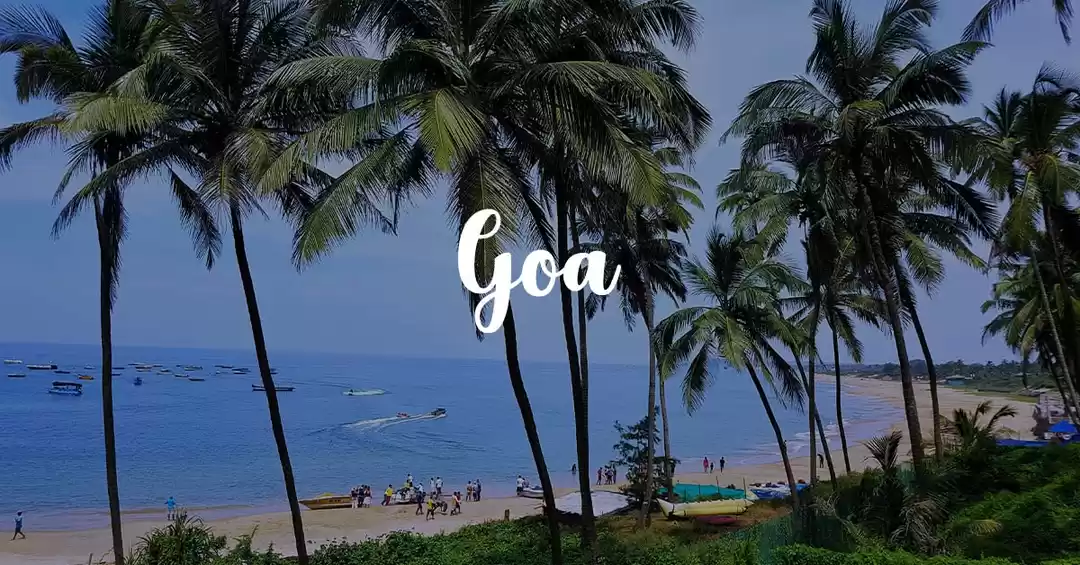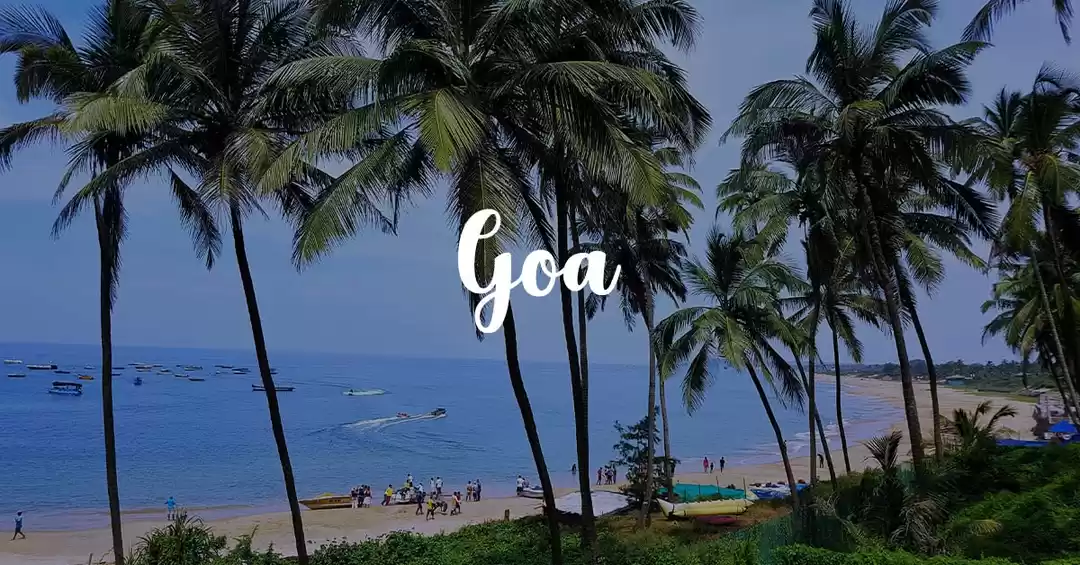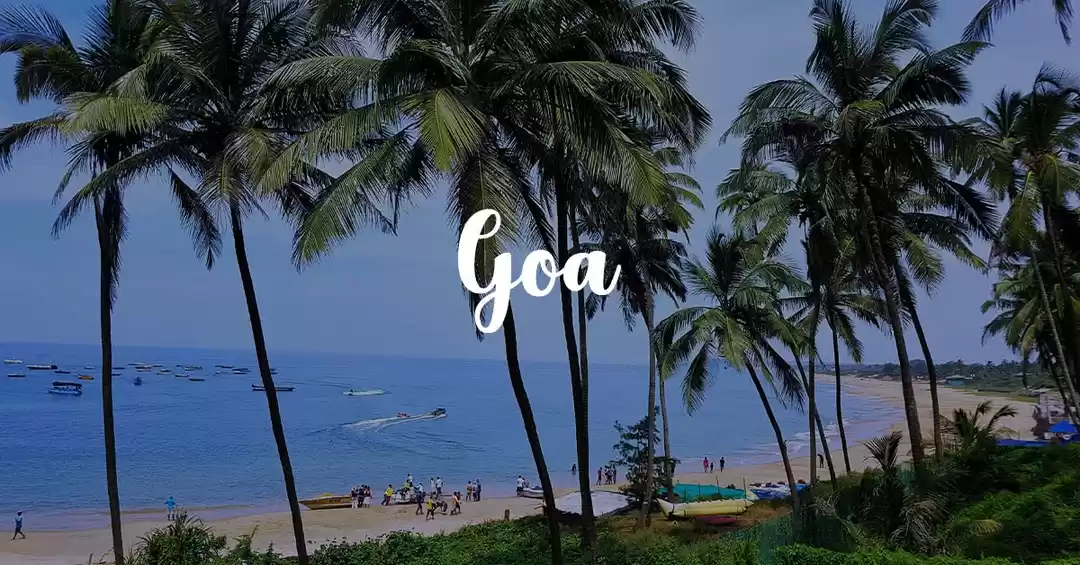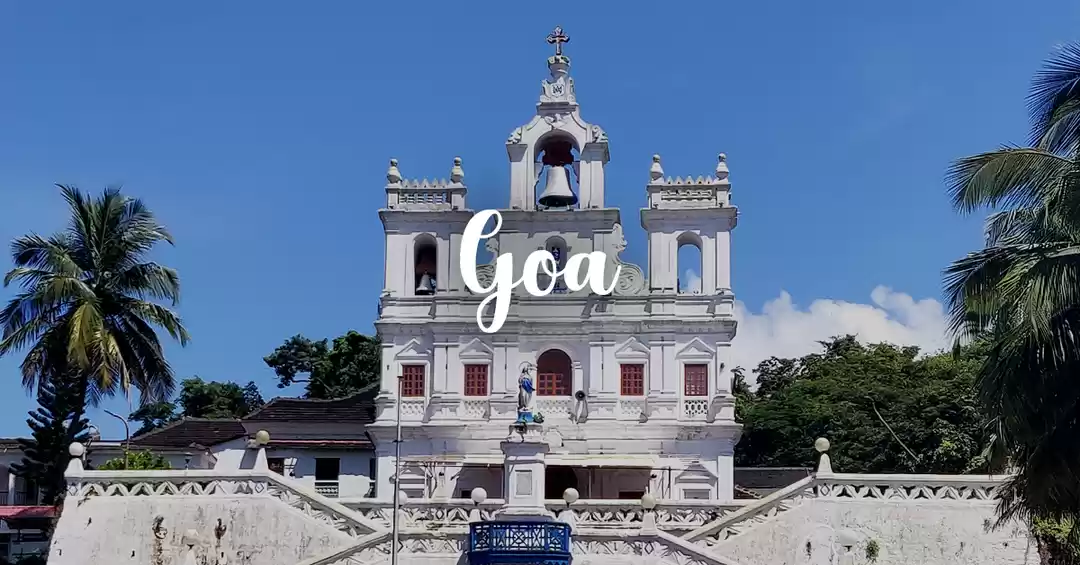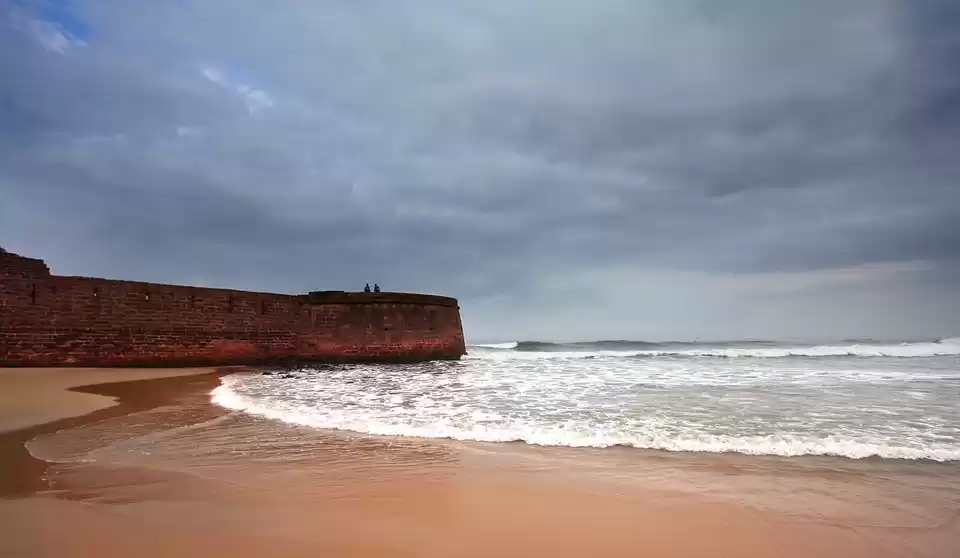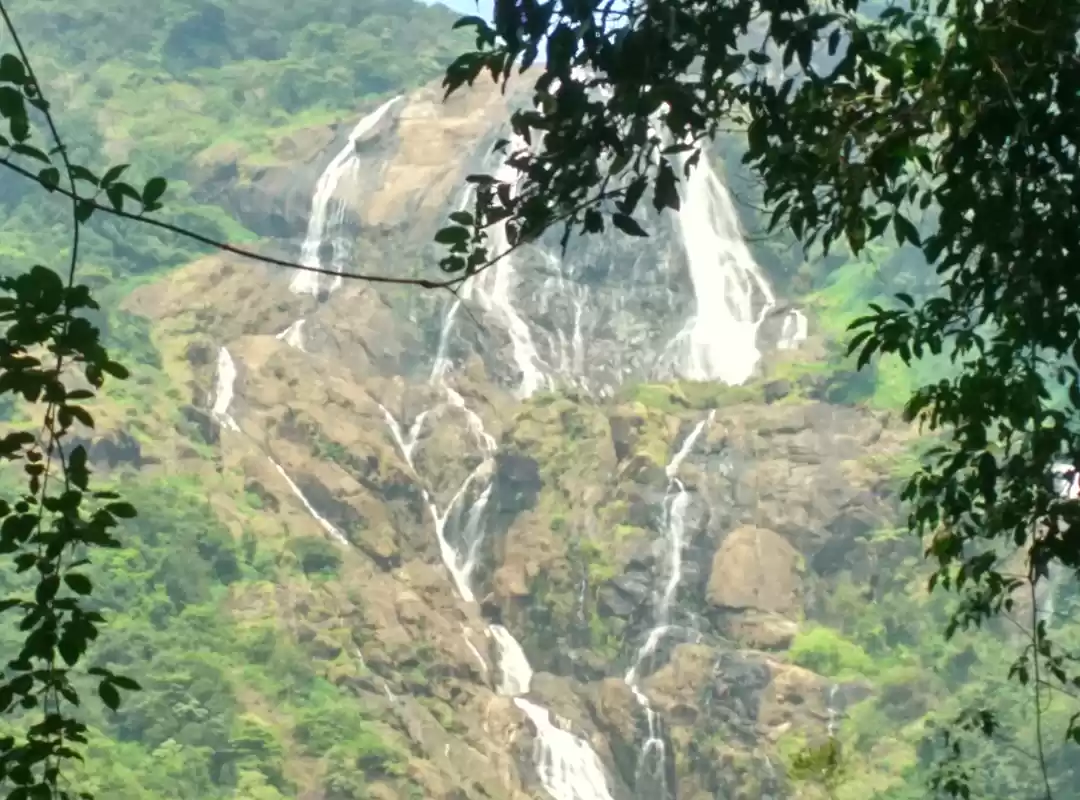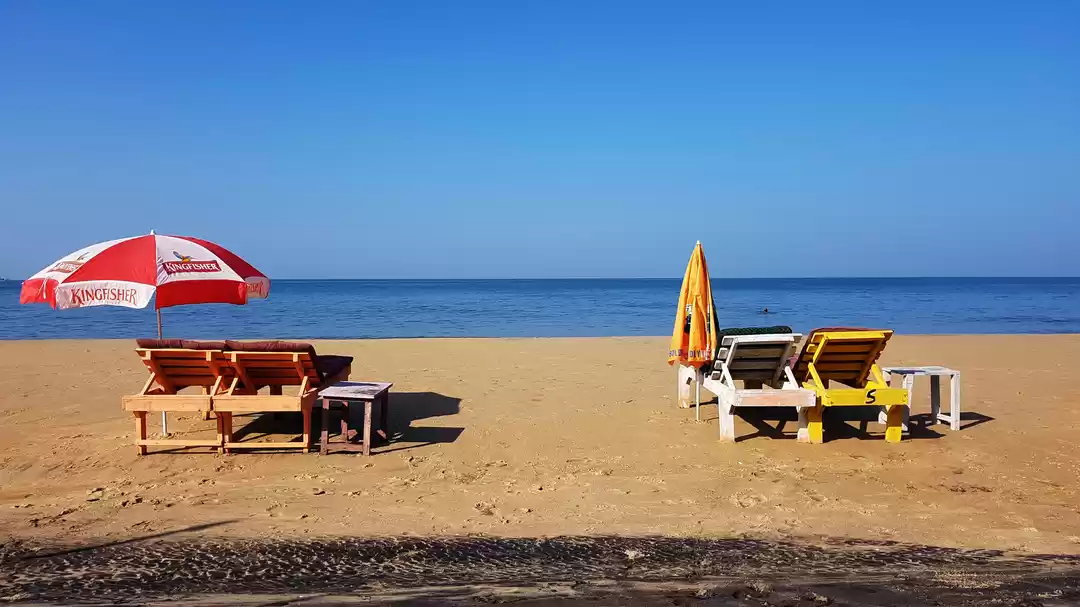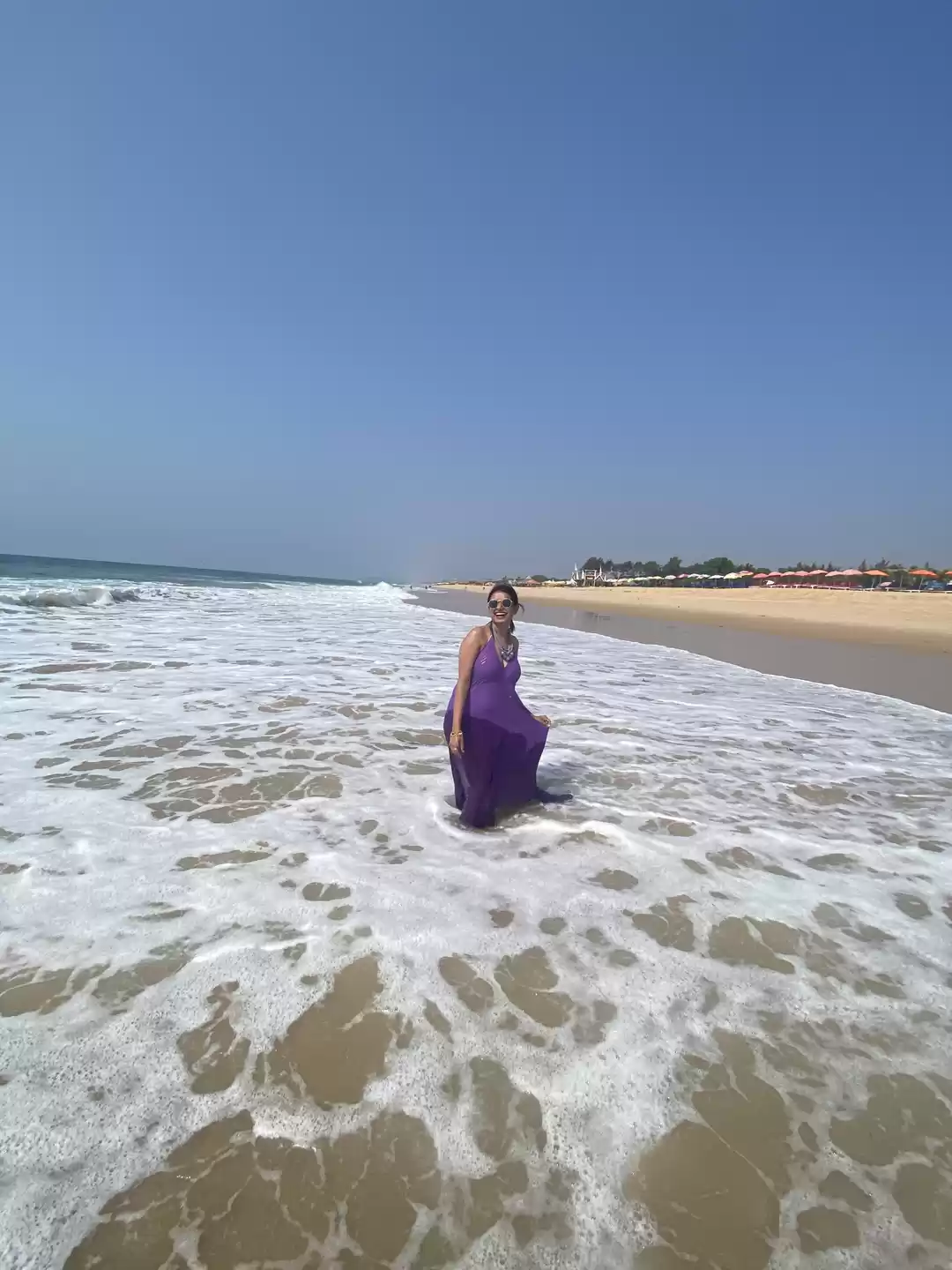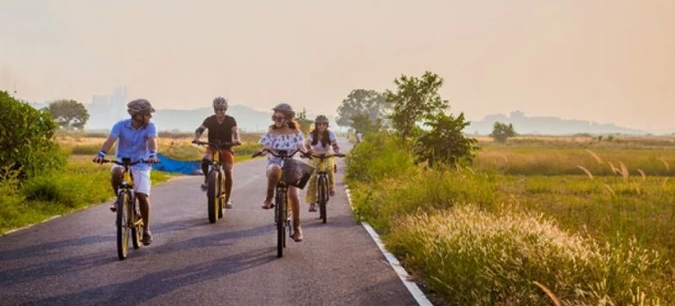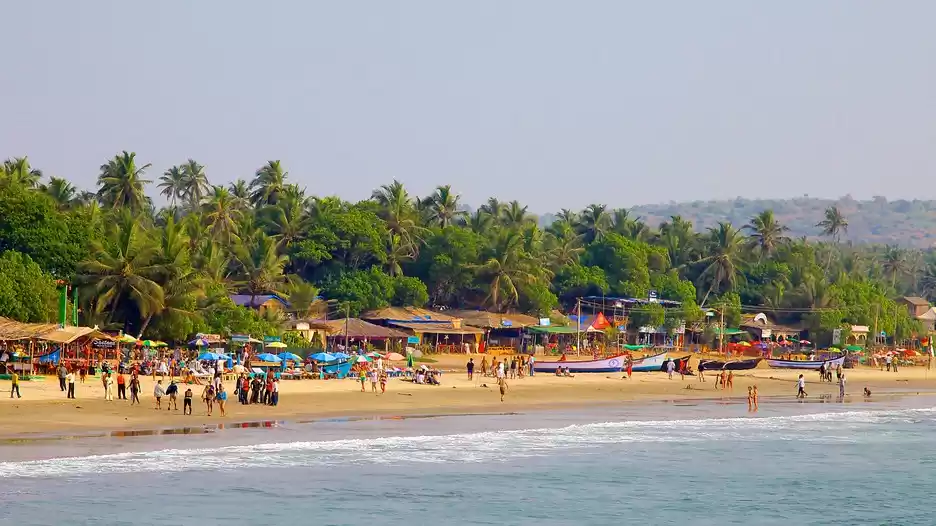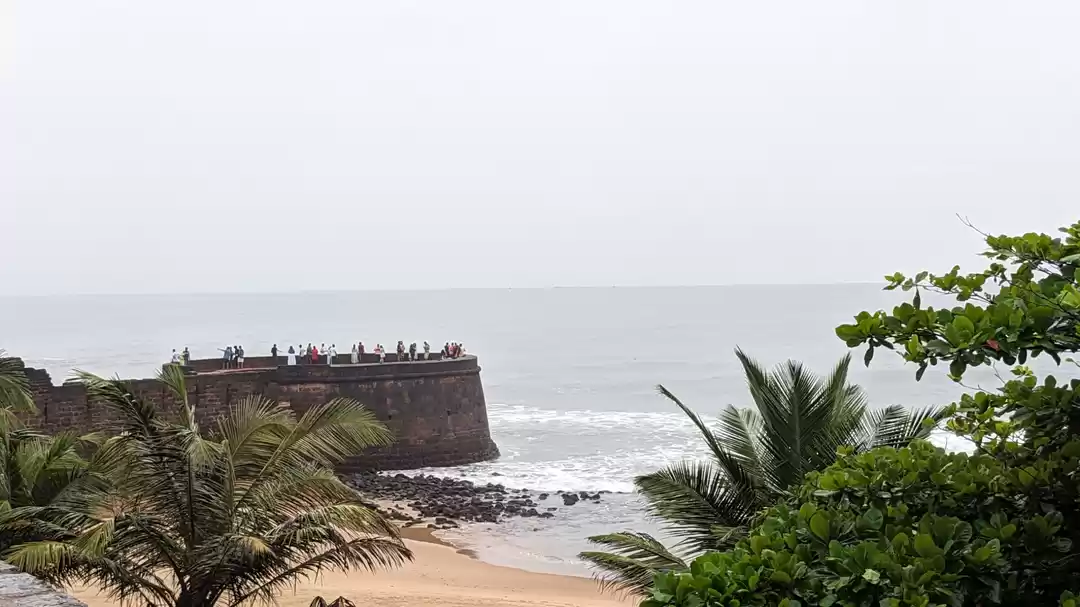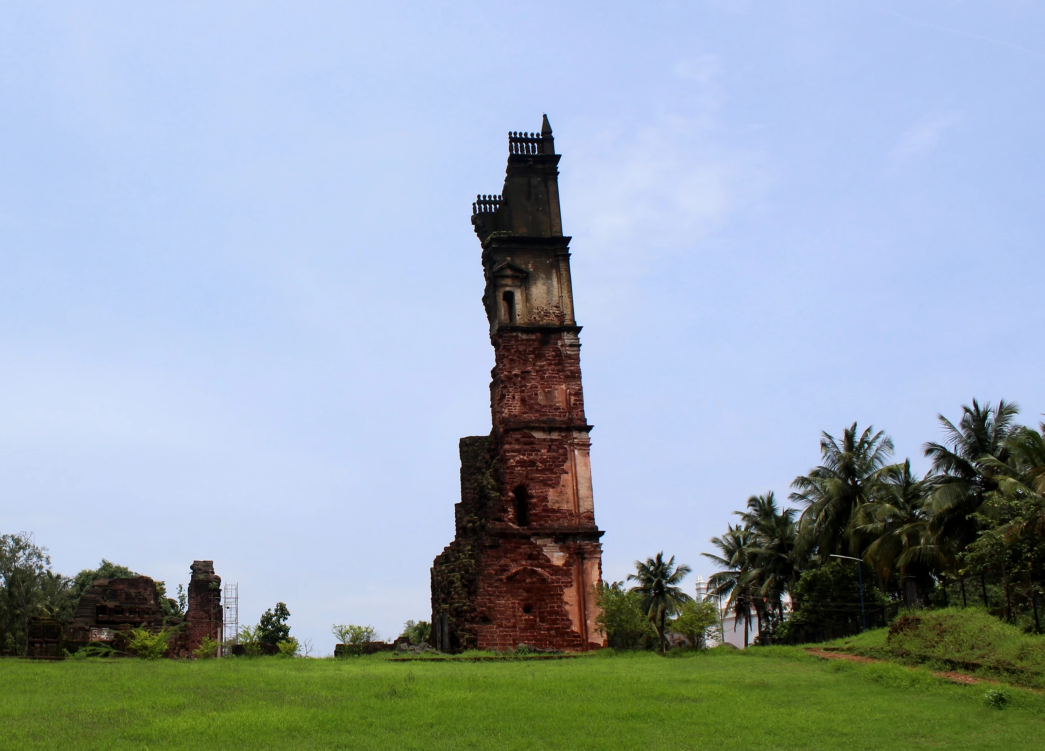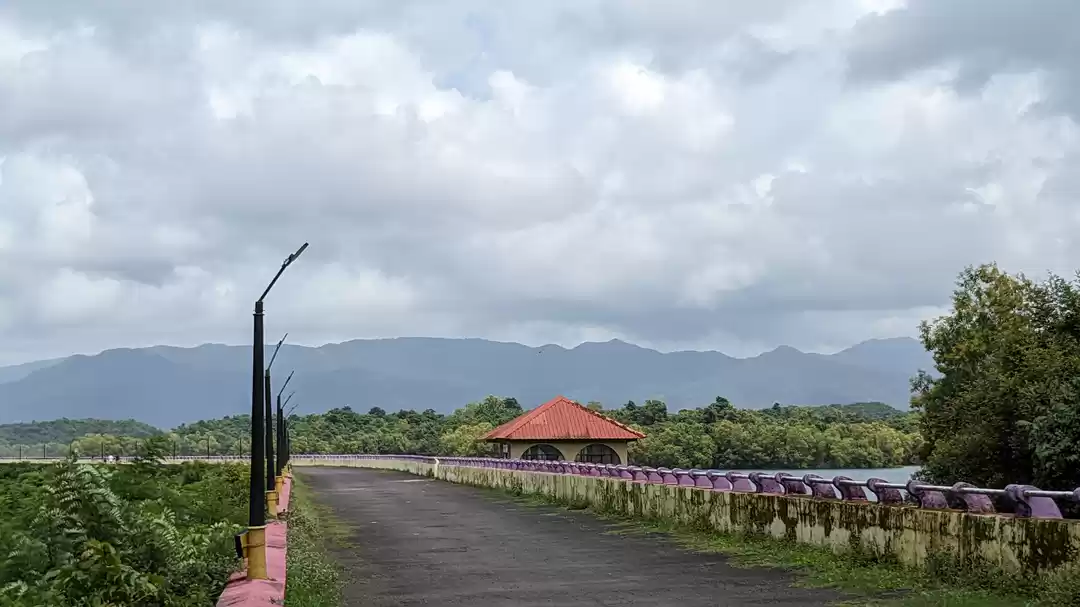
Who doesn’t love Goa? It's a place that needs no introduction, famous for its lavish clubs and casinos, exotic beaches, spiritual churches, untouched greenery, and vibrant nightlife. Just one Goa trip is enough for us to get swept away by its enchanting vibes, making it impossible to resist falling in love with this Union Territory.
Just like everyone else, I was so obsessed with this place. So, this time (my third visit to Goa), I wanted to experience like a local and discover hidden gems beyond the popular landmarks of this small state that draw the usual crowds. I spent hours poring over maps and researching lesser-known places that capture Goa's history, rich art, and cultural heritage. This time, my adventure felt more personal and authentic, and I couldn't wait to discover a side of Goa that few get to see.
Among the many treasures I shortlisted, the Big Foot Museum in Loutolim stood out—a part of Goa I had never explored in my past trips. After visiting, I can honestly say it’s a gem worth experiencing and I'm excited to share my experience with you through this article. So, let's begin?
The Intriguing History Behind the Big Foot Museum
The first time I heard of Big Foot, my mind immediately conjured images of the mythical Sasquatch. You know what it is, right? The hairy, upright-walking, ape-like creature is said to roam the wilderness, leaving behind enormous footprints. Naturally, I expected some connection between this mysterious legend and the museum in Goa.
But to my surprise, the Big Foot in Loutolim, Goa had nothing related to Sasquatch. Instead, it revolves around a different legendary footprint, one that is worshipped daily and revered by locals.
Tale of the Big Foot
The tale centers on a wealthy man named Mahadar, renowned for his boundless kindness and generosity. He was always ready to donate to the poor and needy. Unfortunately, his generosity attracted some lazy and greedy individuals who feigned misfortune to exploit his kindness. Mahadar, with his big heart, continued to give away all his money and possessions until he had nothing left.
Eventually, Mahadar found himself homeless and destitute, forced to seek help from others. But no one came to his aid. Amidst these trying times, his beloved wife passed away, leaving him utterly alone. Despite his hardships, Mahadar dedicated his life to helping those in need, in any way he could.

Pleased with his unwavering compassion, God appeared to Mahadar in a dream and offered to restore his wealth. But Mahadar, ever selfless, asked instead for a blessing upon those who had wronged him. Impressed by Mahadar's humility, God granted him one more boon. Mahadar asked for a small place to stand and pray for mankind. Testing his devotion, God showed him a burning hot rock.
Mahadar stood on the scorching rock on one leg and prayed for many years without hesitation. His devotion eventually won over the gods. They fulfilled his wishes, showered blessings upon him, and took him to heaven, leaving his footprint behind on the rock. Thus, the name Big Foot was born. God promised that anyone praying at that spot with a pure heart would be blessed and have their prayers answered.
The Big Foot Impression
As I wandered through the enchanting exhibits, I finally reached the cave that houses the mythical Big Foot impression. The atmosphere felt deeply respectful, and I could sense how much this footprint is revered by everyone who visits. This place holds deep significance for spiritually inclined visitors and locals, and I felt it was important to approach it with the respect it deserves.

The Sculpture of Saint Mira Bai
The highlight of my visit to the Big Foot Museum in Goa was the awe-inspiring 14-meter sculpture of Saint Mira Bai. It surprised me when I learned that Maendra Jocelino Araujo Alvares, a talented artist, carved this masterpiece in just 30 days. It now holds a place in the “Limca Book of Records” as the longest laterite sculpture in India. I was completely spellbound by its immense scale and intricate details while standing before it.
If you look closely, you'll notice Saint Mira Bai is depicted singing with an Ektara, adorned with various ornaments. The red Kumkum on her forehead highlights her features, the armlet enhances the beauty of her arms, and the anklet adds a quintessential Indian touch.

How is Goa’s Ancestral History Showcased at Big Foot Museum?
I was struck by how this incredible space of the Big Foot Museum, also known as the Ancestral Goa Museum, is dedicated to preserving and celebrating Goa's rich art, culture, architecture, and environment. All of these brought the essence of this state’s past heritage to life in such a vibrant and educational way.
The entire museum is the creation of Maendra Jocelino Araujo Alvares. This charming village offered a glimpse into rural life as it was a hundred years ago. I toured various miniature houses that showcased traditional occupations and social classes, from fishermen and artisans to liquor shops, village markets, and a feni distillery.

This privately owned open-air museum takes me back to the history of Goa and defines its rich cultural heritage and traditional actual Goan village lifestyle through a vast collection of models.
1. Goa – a Fishermen’s Land
When I explored the museum, I was struck by how fishing has always been, and still is, the heart of Goa’s economy. The displays of boats, nets, and other fishing tools were so detailed and well-crafted—it was like stepping back in time. But what really captured my imagination was seeing how fishermen enjoyed their time at home. I loved the scenes of them relaxing with Goan music and a hookah, which really brought to life their vibrant and joyful way of living, both at sea and onshore.

2. Goa – The land of Cows
The name Goa is derived from the Sanskrit word 'Gow”, which means cow. I discovered that cows were highly venerated in this land, and many locals practiced cow rearing. The Big Foot Museum also showcased the rare and unique tools used by Goans during farming. Seeing these tools gave me a deeper appreciation for the agricultural practices and the cultural significance of cow rearing in Goan history.
3. The Gow Kund
In ancient Goa, all the artificial and natural water sources were adorned with cow's heads, giving the enchanting impression that the water flowed from the cow’s mouth (Gow Kund). This unique feature added a sacred and mystical touch to the water sources.

At the museum, there’s a stunning artificial lake that brings this tradition to life. I was particularly moved by the scene of mothers gracefully carrying water in pots while their children joyfully dived into the ponds. This portrayal was the most beautiful and enchanting part of the entire museum.
4. Forgotten Portuguese Goan Culture
Stepping into the museum was like opening a vibrant time capsule for me culture that celebrated the lost Goan culture. It evoked images of Goa as a peaceful fishing village, where life moved with the rhythm of the tides and people lived in harmony with nature. I could almost see the girls adorning their hair with colorful flowers before stepping out, a simple yet beautiful tradition that painted the town in hues of red, yellow, and white.
When I think of Goa, what comes to mind are the iconic blue shirts sprinkled with yellow and white flowers, paired with loose, colorful shorts. But as I explored the museum, I found a deeper, richer glimpse into Goan heritage. The traditional bright-colored ghaghras paired with flowery blouses worn by the flower girls, and the vivid Nauari sarees with checked blouses that graced the housewives, were mesmerizing. I was also captivated by the traditional attire of the legendary Goan fishermen, a testament to their enduring spirit.
Did You Know? The Big Foot Museum is a self-guided travel museum that offers an immersive experience through automated audio tours (Two languages are available - Hindi and English). As you explore, electronic speakers provide information, and detailed displays on the exhibits offer even more insights.
Souvenirs from Big Foot Museum Goa
As my visit came to an end, I found myself irresistibly drawn to the charming souvenir shop. It was a treasure trove of local delights, filled with an array of beautifully crafted handicrafts and delicious food items that captured the essence of Goa.
One particular corner caught my eye—a delightful display of cute Goan lamps, fridge magnets, and dolls right by the exit. The shelves were lined with frames, tiles, and mugs adorned with the whimsical paintings of Mario Miranda, each piece telling a story of its own. Their vibrant colors and intricate designs seemed to whisper, "Take a piece of Goa with you," and I knew I had to indulge in at least one memento (I Love Goa - Fridge Magnet).
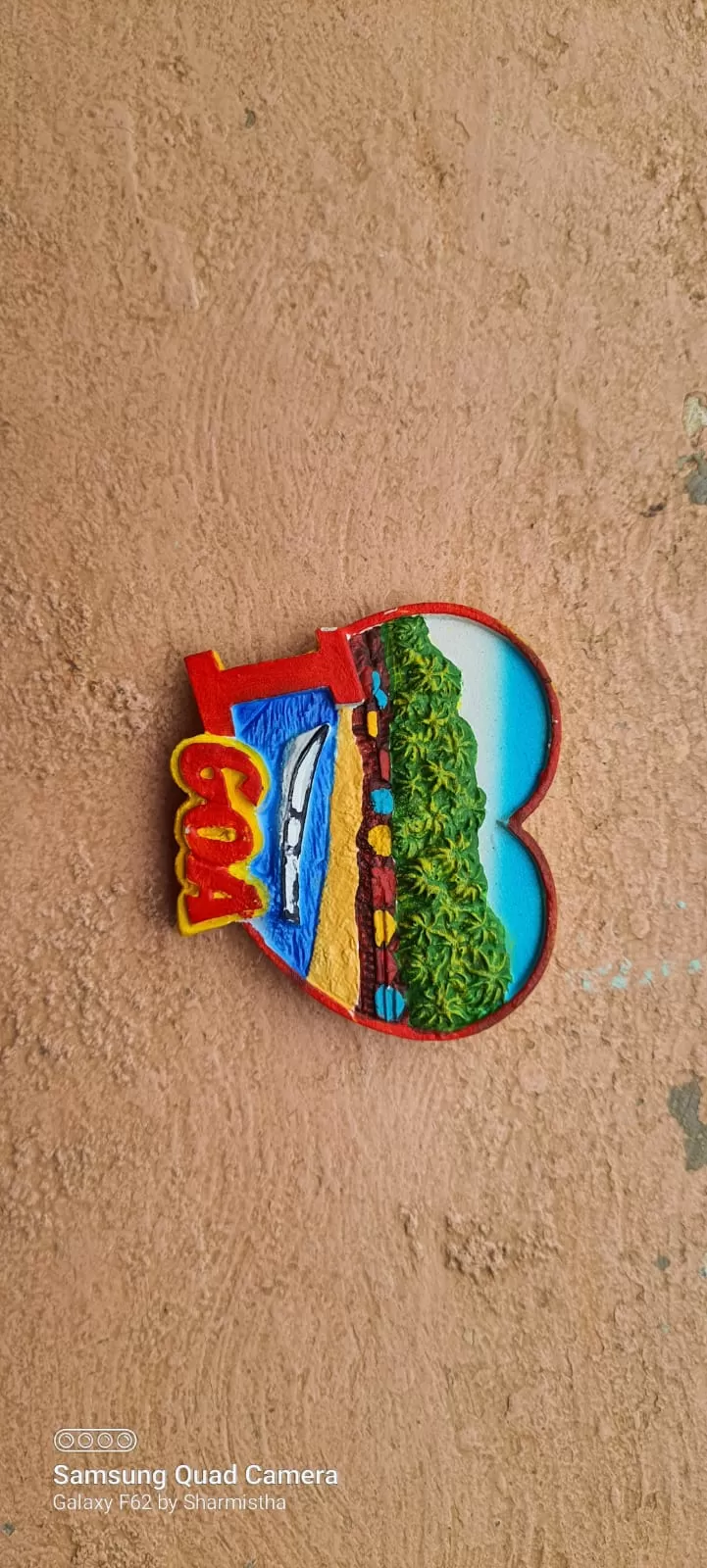
How Can You Reach Big Foot Museum?
The Big Foot Museum is located near Saviour of the World Church, Loutolim, and this location is easily accessible from anywhere in Goa. You can book a cab through the Goa Miles Taxi app, and rent a bike to reach the destination.
The nearest airport to Bigfoot Museum is Goa International Airport (approx. 22 km), while the nearest railway station is Madgaon Railway Station. I actually took a cab from my Indian Railway Officers' stay (Swami Vivekanand Railway Holiday Home) near Madgaon railway station and it took hardly 30 minutes to get there.
Location: Big Foot Goa - Google Maps
There are some beaches nearer to this museum, including Majorda Beach, Batabatim Beach, Benaulim Beach, Arossim Beach, Verca Beach, Carmona Beach, and Utorda Beach. So, if you are staying nearer to these beaches, just hire a cab and reach this Goa Ancestral Museum within an hour.
Best Time to Visit Big Foot Museum Goa
The Big Foot Museum embraces an "open to the environment" concept, making it ideal to visit during certain seasons. The best times to add this destination to your Goa itinerary are in the winter months, October to February. I visited in the last week of January, which contributed greatly to an enjoyable experience.
Travel Tip: I'd recommend avoiding a visit to this Big Foot Museum during the summer months—the intense heat can really dampen the experience. Also, ignore monsoons, from July to September, as Goa receives a huge rainfall. It can be overwhelming, and many areas of this state are on high alert during this time.

Top Places You Must Not Miss Near Big Foot Museum
Here are some nearby places you can explore within 25km of the Ancestral Goa Big Foot Museum.
1. Casa Araujo Alvares
This impressive Portuguese mansion is located just opposite to the Big Foot Museum. The Casa Araujo Alvares is a treasure trove of European antiques and old photographs. Each room in the mansion has been meticulously preserved in its original state, including the kitchen with its traditional implements.

As I wandered through the mansion, I came across Eufemiano Araujo Alvares' office, featuring an intriguing desk with secret drawers and corners, and a fascinating collection of antique smoking pipes. The Alvares family has gone a step further to enhance the visitor experience by installing an automated "sound and light show" tour of the property. This innovative addition illuminates each room while providing insightful commentary, offering a glimpse into the life of a Goan-Portuguese family in days gone by.
Location: Casa Araujo Alvares - Google Maps
Entry Ticket: 150 rupees per head + 20 rupees extra for photography and videography
Timings: 9 AM to 5:30 PM every day
Did you know? Casa Araujo Alvares is also known as “Singham House”, as it is the first film in this series that was shot here. Besides, Dona Paula Jetty, another famous tourist location in Goa, is also a shooting place for this Bollywood blockbuster.
2. Garca Branca Botanical Garden
This enchanting garden was like stepping into a vibrant, living canvas. The sheer variety of plants is astounding. I wandered among giant karatas, vivid shoe flowers, and multicolored bougainvillea. The roses and anthuriums added splashes of color, while the jasmine’s fragrance filled the air. I was particularly taken by the giant money plants and the unique pink pineapples.
The garden also boasts ten-o-clocks, intricate bonsai, and majestic travelers' palms. I found myself marveling at the diverse Ixora varieties, candlesticks, crotons, and coleus, not to mention the intriguing silk trees and even the different kinds of weeds that seemed perfectly at home here. Just 2 hours is enough to fully appreciate the flora and soak in the beauty of this place.
Location: Garça Branca Gardens - Google Maps
Entry Tickets: 100 rupees per person
Timing: 9 AM to 5 PM every day
3. Shree Shanta Durga Temple
During my visit to this serene and historic temple, I felt transported through time. It all began with a small laterite mud shrine, where the deity was initially installed. Over the years, this humble shrine was transformed into the beautiful temple you can see today. The foundation stone was laid in 1730, the temple was completed by 1738, and it underwent a significant renovation in 1966, preserving its timeless beauty.

The temple honors Shanta Durga, the goddess who mediates between Hindu God Vishnu and Shiva. Locally known as 'Santeri', she holds a special place in the hearts of devotees. It is said that the Hindu God Shiva and Vishnu were once locked in a fierce battle, causing such chaos that the Hindu God Brahma himself pleaded with the Hindu Goddess Parvati to intervene. She did so by manifesting as Shanta Durga, gracefully mediating the conflict by holding Vishnu in her right hand and Shiva in her left, bringing peace between them.
Location: Shree Shantadurga Temple - Google Maps
Timings: 6 AM to 8:30 PM every day
4. Japanese Garden
This hidden gem offers a serene escape from the usual beach hustle, providing a slice of Japanese horticulture that instantly transports you to another world. As I walked through the meticulously designed pathways, I was captivated by the traditional Japanese landscaping.
The koi fish pond was particularly enchanting, with its shimmering fish gliding gracefully beneath the ornamental bridges. Stone lanterns added a touch of authenticity, nestled among a delightful mix of native Japanese plants and local flora.
Location: Japanese Garden - Google Maps
Timings: 5 AM to 8 PM every day
Travel Tip: If you have the time, be sure to stay for the stunning sunset view from the Japanese Garden and Grandmother’s Hole Beach. And on your way there, don't miss the opportunity to visit the Hindu Temple, namely Shree Durga Mata Shib Mandir.
5. Shri Damodar Sansthaan
This temple holds a special place in the hearts of locals and pilgrims alike, not only for its spiritual significance but also for its unique blend of Goan architecture and traditional Hindu temple art. The Shri Damodar Temple, in the village of Zambaulim, is dedicated to Lord Damodar, an incarnation of Hindu Lord Shiva.
As I walked through the temple complex, I was struck by the serene and spiritual ambiance. The intricate carvings and the peaceful surroundings made it a perfect place for reflection and devotion. The original temple was located in Margao but was destroyed during the Portuguese invasion. The deity was then carefully relocated to Zambaulim, where it continues to be worshipped with great reverence.
Location: Shri Damodar Sansthaan - Google Maps
Timings: 6 AM to 8:30 PM every day
6. Patriarchal Seminary of Rachol
Also known as “Rachol Seminary”, this place holds the distinction of being the oldest seminary in Asia. As I approached the seminary, I was immediately struck by its distinctive architecture, a harmonious blend of Portuguese colonial design and local Goan aesthetics.
The Patriarchal Seminary of Rachol was established in 1609 on the left bank of the Zuari River. It was built on the site of a former Muslim fortress that was captured by the Portuguese.

Inside, the seminary houses a beautiful church, a theological college, and a museum filled with religious artifacts and old paintings. Each corner seemed to whisper stories of its rich past. The museum was particularly captivating, offering a glimpse into the history and spirituality that have shaped this institution over the centuries.
Beyond its educational role, the Rachol Seminary is a place of deep spiritual significance for Catholics in Goa. The serene surroundings, coupled with the sense of historical grandeur, created an atmosphere of peace and reflection. I felt a deep sense of connection to the rich history and spirituality that infused this remarkable place while exploring this place.
Location: Patriarchal Seminary of Rachol - Google Maps
Timings: 7:30 AM to 6:30 PM every day
7. Rivona Buddhist Caves
This hidden gem of Goa was so fascinating for me that it took me back to the 6th century. It is actually Buddhist caves, carved out of laterite rocks, offer a captivating glimpse into the history and religious significance of the area.
In these Buddhist caves, I came across a 'Pitha,' which was once used by Buddhist monks for meditation. It was easy to imagine the monks sitting in deep contemplation, surrounded by the tranquil atmosphere of these sacred spaces.
It was a bit of trekking through rugged terrain to reach the caves, but it was well worth the effort. The path led me through lush greenery and the stunning beauty of the Goan countryside, adding to the sense of adventure and discovery.
Location: Rivona Buddhist Caves - Google Maps
Timings: 9 AM to 5 PM from Monday to Saturday. The caves remain closed on Sunday.
Did You Know? The Rivona Buddhist Caves are also known as “Pandava Caves”. It is believed that this cave has been used by the Pandavas (the five brothers from the Hindu epic Mahabharat)
8. Our Lady of the Mount Chapel
This historic Roman Catholic church immediately captivated me with its serene atmosphere and breathtaking views of the surrounding countryside. From the chapel, I enjoyed sweeping vistas of the Mandovi River and the island of Divar, which added to the sense of tranquility that enveloped the place.
Location: The Our Lady On The Mount Chapel - Google Maps
Timings: This church was closed when I visited. But its usual hours are 9 AM to 5 PM.
Did You Know? One of the major highlights of this church is the annual Monte Music Festival, which takes place every February. In 2024, the event was held from 2nd February to 4th February. Unfortunately, I missed the chance to see Goan, Indian, and International performers, who are masters of classical and contemporary music, all sharing the same stage.
9. Basilica of Bom Jesus
I was just intrigued by the breathtaking Baroque architecture of this UNESCO World Heritage Site, located in Old Goa. The Basilica of Bom Jesus is a treasure trove of history and spirituality. It houses the sacred remains of St. Francis Xavier, a revered Jesuit missionary who played a pivotal role in spreading Christianity across Asia.

St. Francis Xavier was also known as the "Patron Saint of Goa,". In this heritage site, his legacy is honored with a glass-sided coffin displayed on a marble platform inside the church. Please note that photography is not allowed inside this church.
Location: Basilica of Bom Jesus - Google Maps
Timings: 9 AM to 6:30 PM every day
Did You Know? Every ten years, the Basilica of Bom Jesus hosts an exposition of St. Francis Xavier's body. It attracts thousands of visitors from around the world. The next date of exposition is scheduled to take place from 21 November 2024 to 5 January 2025.
10. Se Cathedral
Standing before the Se Cathedral, just across from the Basilica of Bom Jesus, I was immediately captivated by its majestic presence. This magnificent structure of this UNESCO World Heritage Site took my breath away with its impressive Portuguese-Manueline architectural style.

Stepping inside, I was captivated by the intricate altars and the famous Golden Bell, the “Largest Bell in the World’, which filled the halls with its deep resonance and added to the cathedral's sense of grandeur. The white façade, towering structures, and Baroque features made the Se Cathedral an iconic landmark in Goa’s religious and cultural landscape. Exploring this historical site was an unforgettable experience, offering a glimpse into the rich history and cultural exchange of Goa's past.
Location: Se Cathedral - Google Maps
Timings: 7:30 AM to 6 PM every day
Did you know? The Se Cathedral was built to celebrate the Portuguese victory under Afonso de Albuquerque over a Muslim army, which led to the capture of Goa in 1510. This victory occurred on the feast day of Saint Catherine, to whom the cathedral is dedicated.
11. Church of St. Francis of Assisi
Right next to the Se Cathedral, I stumbled upon a fascinating piece of history—the Church of St. Francis of Assisi. This church was established between 1517 and 1521 during Portuguese rule by eight Franciscan friars and is one of the finest examples of Portuguese architecture.
This admirable majestic structure was originally a small chapel built with laterite stone. It was reconstructed into a full-fledged church in 1529 and underwent another remodeling in 1661, reflecting the evolving architectural styles of the time. As I strolled through the museum's halls, the exhibits seemed to whisper stories of Goa’s rich history and culture, immersing me in the lives of those who came before us.
Location: Church of St. Francis of Assisi - Google Maps
Timings: 7:30 AM to 6 PM every day
Did You Know? In 1853, it was closed because the Portuguese government could no longer maintain the convent. The story didn't end there, though. In 1964, the archaeological department stepped in and transformed the convent into a museum.
Other Tourist Places You can Visit Near Big Foot Museum
You can also cover the below tourist attractions within a 30-minute to 1-hour drive from the Big Foot Museum.
1. Museum of Christian Art Goa
2. Main Altar of Church of St. Augustine
3. Abyss Aquarium Verna
4. Three Kings Church
5. Tropical Spice Plantation
6. Andrew's Church
7. Naval Aviation Museum
8. Our Lady of Merces Church
10. The Menezes Braganza House
Conclusion
If you are looking for the best places to visit near Madgaon, apart from beaches, then you must not miss Big Foot Museum. It will take about an hour to complete your tour accompanied by automatic audio guidance at all points without any interactions with the museum’s staff.
The moment I entered the museum, I was greeted with a warm, and traditional welcome. A lady at the door applied a tilak on my forehead and showered me with flowers and scented water. As I moved from one exhibit to another, an audio recording played (I chose the English language audio recording), guiding me through the experience with stories and information.

Travel Tip: The most convenient way to get around Goa is by using the state buses, but they remain crowded most of the time. So, if you have a driving license, consider renting a two-wheeler or four-wheeler. With Google Maps as your guide, you can cover all the places (both known and unknown) at your own pace. Self-riding rentals give you the freedom to visit any destination on your Goa itinerary, while tour agencies tend to stick to the most popular tourist spots already on their lists.
Important Checklist
1. Entry Tickets for Big Foot Museum: 150 rupees per person + 20 rupees extra for photography and videography
2. Big Foot Museum Timings: 9 am to 6 pm every day
3. Wheelchair-accessible car park, entrance, and in toilets
4. Clean Toilets
5. Kids Friendly
6. Family Friendly
7. No restaurants inside the museum, but there is a small food joint for purchasing water bottles, snacks, potato chips, tea, coffee, etc.
8. No restrictions on carrying your pet, you can take your pet at your own responsibility.



